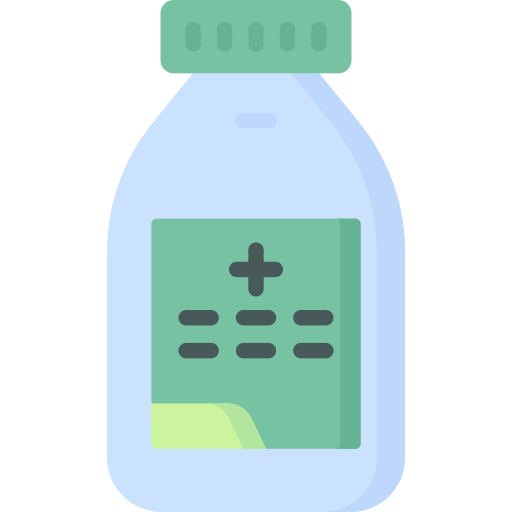
Erythromycin
125 mg/5 ml
Kumudini Pharma Ltd.
Product Details
Description
Erythromycin belongs to the macrolides group of antibiotics. It exerts a bacteriostatic or bactericidal action based on specific interference with ribosomal protein synthesis within the bacterial cell. THROCIN is mainly used for the treatment of infections caused by penicillinase producing staphylococci. The following micro-organisms are particularly susceptible to Erythromycin. Gram (+)ve : Cocci and bacilli. Gram (-)ve : Neisseria catarhalis, N.meningitis, N.gonorrhoea, Haemophilus influenzae, Brodetella, H. pertussis.Other micro-organisms : Mycoplasma pneumoniae, Legionella pneumophila, Bacteroides fragilis, B.oralis, B.melaninogenicus, Fusobacterium, Chlamydia trachomatis, Treponema pallidum.
Erythromycin is highly effective in the treatment of a wide variety of clinical infections. Upper respiratory tract infections: Tonsilitis, Peritonsillar abscess, Pharyngitis, laryngitis, Sinusitis. Secondary infections in colds and influenza. Lower respiratory tract infections: Tracheitis, acute and chronic bronchitis. Ear infections: Otitis media, otitis externa, mastoiditis. Eye infections: Blepharitis, established trachoma. Skin and Soft tissue infections: Boils and carbuncles, impetigo, abscesses, pustular acne, paromychia, cellulitis, erysipelas. Gastrointestinal tract infections: Cholecystitis, staphylococcal enterocolitis. Prophylaxis: Pre and post-operative, trauma, burns, rheumatic fever. Other infections: Osteomyelitis, diptheria, scarlet fever, whooping cough.
Erythromycin inhibits microsomal protein synthesis in susceptible organisms by inhibiting the translocation process. Specific binding to the 50S subunit or 70S ribosome occurs in these organisms but there is no binding to the stable 80S mammalian ribosome. Erythromycin is active against many Grampositive bacteria, some Gram-negative bacteria and against mycoplasmas and chlamydia. Absorption: Erythromycin base is destroyed by acid and is therefore administered in the form of stable ester. The rates of absorption of the base and esters are diminished by the presence of food. The stearate is hydrolyzed in the intestine and the free erythromycin absorbed. Blood concentration: After an oral dose of 500 mg. of the base of stearate, peak serum concentrations of 0.9 to 1.4 or 0.4 to 1.8 mg/ml. respectively are attained in 1 to 4 hours. Half-life: The serum half-life is 1.2 to 4 hours. In subjects with oliguria, the half-life is about 5 hours. Distribution: Erythromycin is widely distributed throughout body tissue and fluids with some retention in the liver and spleen, protein binding of erythromycin base is 73%. Erythromycin enters the cerebrospinal fluid when the meninges are inflamed. It also crosses the placenta and is excreted in the milk. Excretion: 5 to 15 % of the dose of erythromycin is excreted in the urine and large amounts of the unchanged active substance are excreted in the bile.
Adult and Children over 8 years: 250-500 mg every six hours for mild to moderate infections. This may be increased upto 4 gm. or more daily in severe cases. Elderly: No special dosage recommendation. Erythromycin may be administered if desired, three times daily or twice daily by giving one-third or half of the total daily requirement 8 hourly or 12 hourly respectively. Children aged 2 to 8 years: 250 mg. every six hours or 30-50 mg/kg body weight per day divided into four equal dosage. Infants and Children upto 2 years: 500 mg. in divided doses or 30-50 mg/kg body weight in divided doses.
Recent data from studies of erythromycin reveals that its use in patients who are receiving high dosage of theophylline may be associated with an increase of serum theophylline levels and potential theophylline toxicity. In such cases this dose of theophylline should be reduced.
Known hypersensitivity to Erythromycin.
Allergic reactions are rare and mild although anaphylaxis has occurred. Occasionally there is abdominal discomfort after oral administration, sometimes with nausea and vomiting. This discomfort usually subsides after a few days without it being necessary to reduce the dosage.
Clinical and Laboratory studies have been shown no evidence in human of teratogenicity or toxicity. However, caution should be exercised when prescribing this drug to pregnant patients and lactating mothers since erythromycin crosses the placental barrier and is excreted in breast milk.
Erythromycin should be given with care in patients with impaired hepatic function, as erythromycin is excreted principally in the bile.
In case of overdosage, Erythromycin should be discontinued. Overdosage should be handled with the prompt elimination of unabsorbed drug and all other appropriate measures should be instituted. Erythromycin is not removed by peritoneal dialysis or haemodialysis.
Anti-diarrhoeal Antimicrobial drugs, Macrolides
-
Support 24/7
Call us anytime -
100% Safety
Only secure payments